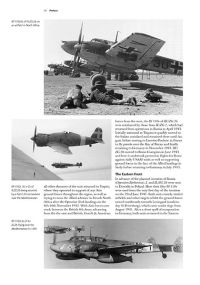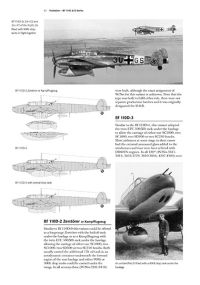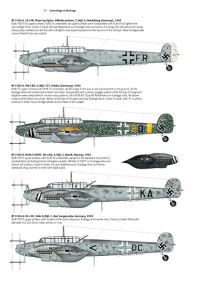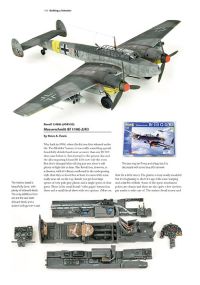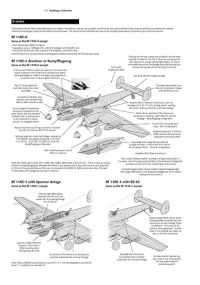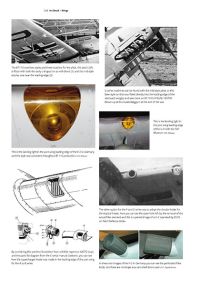Valiant Wings Publishing | Airframe & Miniature No. 17: The Messerschmitt Bf 110
Reviewed by Kevin Futter
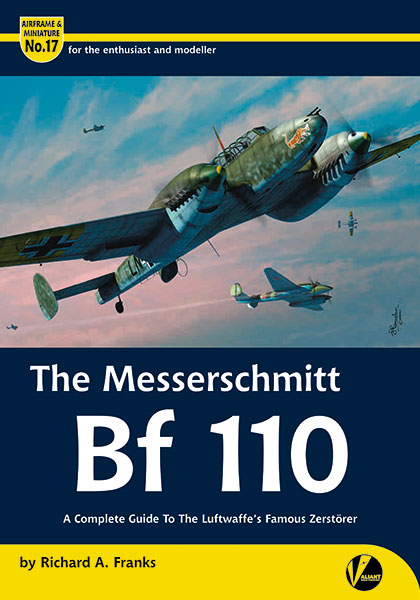
UK publisher Valiant Wings Publishing has released Number 17 in its Airframe & Miniature series, entitled The Messerschmitt Bf 110: A Complete Guide to the Luftwaffe's Famous Zerstörer. The author is Richard Franks, and the illustrations are shared between Richard Caruana, Wojciech Sankowski, and Juraj Jankovic. The terrific cover art is by Jerry Boucher.
The first thing that struck me when I picked up this book was how heavy it is; at a hefty 256 pages plus a gatefold section of scale drawings, it is indeed a weighty tome. It's extremely well printed on quality glossy paper, and the reproduction of all drawings and photographs is first-class.
The contents are broken up into nine separate chapters, grouped into two distinct sections:
- Airframe Chapters
- Evolution - Prototypes, Bf 110A-0 & B Series
- Evolution - Bf 110C & D Series
- Evolution - Bf 110E & F Series
- Evolution - Bf 110G & H Series
- Camouflage & Markings and Colour Profiles
- Miniature Chapters
- Bf 110 Kits
- Building a Selection
- Building a Collection
- In Detail: The Bf 110
There is also a preface, along with a collection of appendices at the rear of the book:
- Bf 110 Kits
- Bf 110 Accessories
- Bf 110 Decals
- Bibliography
The sample images below (courtesy Valiant Wings Publishing) should give a good indication of the nature and style of the book's contents:
While not mentioned in the table of contents, the Preface weighs in at a substantial 32 pages, and describes a potted history of the Bf 110, which provides useful support for the subsequent technical information.
The sequence of four chapters covering the evolution of the airframe spans 39 pages, and consist of brief summaries supported by crisply-rendered greyscale profile drawings. They are clear and easy to follow, and form a handy guide for discerning what features distinguished which variants.
The Camouflage & Markings section covers 25 pages, and includes a three-view stencil placement guide. Rather than a dedicated section for colour profiles, they are instead interspersed throughout the text as necessary. They are by Richard Caruana as usual, and are very nicely rendered indeed. A set of profiles for aircraft in foreign service is also provided.
Chapter 6 features a brief description of the commonly available Bf 110 model kits. We have a range of options in 1/32 scale from Revell and Dragon, but nothing approaching a modern tooling for the late-war variants. Only the newer kits are discussed in this section, however, though a more complete list is featured in the appropriate appendix.
The modelling section (Chapter 7) features only three kit builds, comprising a 1/72 Eduard Bf 110G-4 build by Libor Jekl, a 1/48 Revell Bf 110G-2/R3 build by Steve Evans, and a build of the Revell (Dragon) Bf 110C-2/C-7 kit, also by Steve Evans. These models are extremely well done, and will serve as inspiration and guidance for our own Bf 110 builds when we get to them.
Chapter 8 is called Building a Collection, and features a series of annotated isometric 3D line drawings by Wojciech Sankowski and Juraj Jankovic. These are designed to illustrate the salient differences between the various prototype and production airframes as the series developed, and form a perfect companion to the earlier 'evolution' chapters.
Chapter 9, In Detail, features an extensive selections of photographs and diagrams, including a series of walkaround detail photos of surviving airframes. The walkaround photos have been selected with a modeller's eye, which is not only welcome, but very handy.
The four appendices cover the usual list of available kits, aftermarket, decals, and mask sets, as well as a concise bibliography for further research.
The scale plans included at the very back of the book are to 1/48 scale, and presented in gatefold format. They're printed on heavy, non-glossy plain stock, covering the following airframes:
- Messerschmitt Bf 110B-1
- Messerschmitt Bf 110C-1
- Messerschmitt Bf 110C-2
- Messerschmitt Bf 110C-3
- Messerschmitt Bf 110C-6
- Messerschmitt Bf 110C-7
- Messerschmitt Bf 110D-0/D-1
- Messerschmitt Bf 110D-2/Trop
- Messerschmitt Bf 110E
- Messerschmitt Bf 110E-1/Trop
- Messerschmitt Bf 110F-2
- Messerschmitt Bf 110F-2/Trop
- Messerschmitt Bf 110G-2
- Messerschmitt Bf 110G-4
These are drawn by Richard Caruana and look very nicely done. They do feature some discrepancies with information presented elsewhere in the book, however—especially with regard to the enlarged fin and rudder design introduced on the G variant in 1943. These are shown as standard on the plans, whereas the line drawings earlier in the book (both isometric and profile) show them as a feature only on variants equipped with under-fuselage gun pods. My understanding is that they were indeed standard on most G variants—especially the G-4. The text is unclear on the matter, which only adds to the confusion.
Conclusion
Not being an expert on the Bf 110, I can't give a considered evaluation of the accuracy or veracity of the text itself, and so will leave that to more knowledgeable readers. All other elements of the book ooze quality however, from the clear photography to the beautiful profiles and the detailed scale plans. Contemporary photographs are plentiful and very nicely reproduced. It's only marred by the continued presence of too many typos. Overall, though, it's an impressive attempt to be the Complete Guide the title alludes to. Recommended!
Thanks to Valiant Wings Publishing for the review copy.
© Kevin Futter 2022
This review was published on Friday, March 18 2022; Last modified on Friday, March 18 2022

